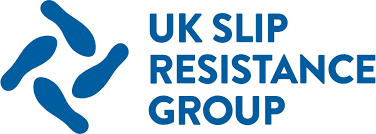What is LRV?
LRV (Light Reflective Value) is measured on a scale from 0 to 100, where 0 represents absolute black, which absorbs all light and heat, and 100 represents pure white, which reflects all light. Professionals in building and design—such as architects, engineers, interior designers, and color consultants—rely on these measurements to assess how light or dark a color or surface (such as tiles and walls) will appear.
The British Standard BS 8300:2009, and the related BS 8493:2008+A1:2010, often serve as the basis for implementing LRV guidelines in European countries. These standards provide methods for measuring LRV and defining the minimum contrast requirements.
In Ireland reference Building Regulations M from Page 128 - Download a copy HERE
Why is LRV Important?
LRV is essential in creating accessible environments by ensuring sufficient contrast, improving safety, and facilitating compliance with accessibility standards. Thoughtful use of LRV in design contributes to spaces that are welcoming and usable for people of all abilities.
1. Contrast for Visual Clarity
- LRV helps designers and architects ensure there is adequate contrast between surfaces, such as walls, floors, doors, and furniture. High contrast is particularly essential for individuals with low vision, as it makes it easier to distinguish boundaries, navigate spaces, and avoid obstacles. For example, a door with a significantly different LRV than the surrounding wall ensures it stands out and is easy to locate.
2. Compliance with Accessibility Standards
- Accessibility guidelines, such as the Americans with Disabilities Act (ADA), recommend or require specific contrast ratios between adjacent surfaces to support individuals with visual impairments. LRV is a key metric used to calculate these ratios and ensure compliance.
3. Improved Wayfinding
- In public spaces, clear contrast between pathways, signage, and walls improves wayfinding for people with visual challenges. This can be especially helpful for individuals with color blindness or other vision-related conditions.
4. Safety
- Proper use of LRV helps minimize hazards by making potential obstacles, steps, or transitions (e.g., stair edges or changes in flooring) more visible. This reduces the risk of trips and falls for everyone, particularly those with limited vision.
5. Enhanced Lighting Efficiency
- By considering LRV, designers can optimize lighting levels for accessibility. Surfaces with higher LRVs reflect more light, reducing the need for excessive artificial lighting and creating evenly lit environments that benefit individuals who rely on well-lit spaces.


